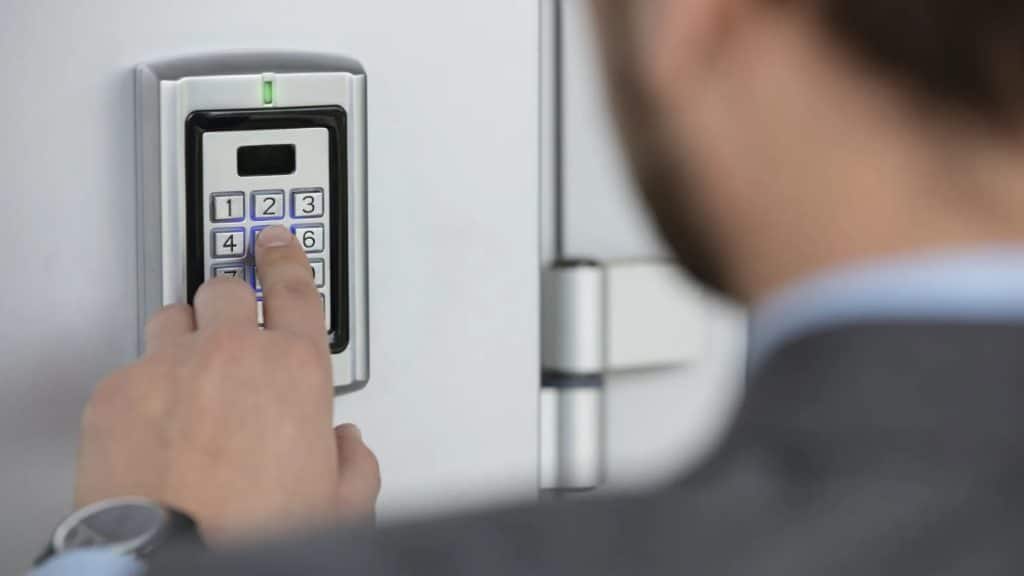Streamline Your Security: Effective Commercial Building Access Control Systems Explained
In today’s complex commercial landscape, ensuring the safety and security of your building is paramount. A robust access control system is the cornerstone of any comprehensive security strategy. This article delves into the intricacies of commercial building access control systems, exploring various technologies, benefits, and considerations to help you make informed decisions.
Understanding Access Control Systems
An access control system is a security mechanism that regulates entry and exit to a building or specific areas within it. It comprises hardware components like readers, controllers, and actuators, along with software for managing user access and generating reports.
Key Components of an Access Control System
- Access Control Panels: The central brain of the system, controlling access points and communicating with other components.
- Readers: Devices that capture user credentials, such as cards, keypads, or biometric data.
- Controllers: Manage access requests and communicate with the access control panel.
- Actuators: Devices that control physical access, like electric locks, maglocks, or turnstiles.
- Software: Manages user access permissions, generates reports, and provides system monitoring.
Types of Access Control Systems
There are several types of access control systems to choose from, each with its own advantages and suitable applications.
Mechanical Access Control
- Key-Based Systems: Traditional locks using physical keys.
- Limited Access: Suitable for small buildings with minimal security requirements.
- Key Management Challenges: Prone to lost or stolen keys, key duplication, and unauthorized access.
Electronic Access Control (EAC)
- Card-Based Systems: Utilizes proximity cards, magnetic stripe cards, or smart cards.
- Enhanced Security: Offers greater control over access and user management.
- Flexibility: Can be integrated with other security systems.
Biometric Access Control
- Fingerprint, Facial, Iris, or Hand Geometry Recognition: Based on unique biological characteristics.
- High Security: Prevents unauthorized access through biometric data.
- Convenience: Hands-free access for authorized users.
Cloud-Based Access Control
- Remote Management: Access control system hosted on a cloud platform.
- Scalability: Easily adaptable to changing security needs.
- Cost-Effective: Reduces on-site hardware and maintenance requirements.
Benefits of Implementing an Access Control System
A well-designed access control system offers numerous advantages for commercial buildings:
- Enhanced Security: Protects against unauthorized entry, theft, and vandalism.
- Improved Efficiency: Streamlines access management and reduces administrative tasks.
- Cost Savings: Reduces labor costs associated with manual access control.
- Compliance: Meets industry regulations and standards for security.
- Data Management: Provides detailed access logs for analysis and reporting.
Choosing the Right Access Control System
Selecting the appropriate access control system depends on several factors:
- Building size and complexity: Determine the number of access points and required security levels.
- Budget: Consider the initial investment and ongoing maintenance costs.
- Security requirements: Evaluate the specific threats and risks to your building.
- User needs: Consider the convenience and usability for employees and visitors.
- Scalability: Choose a system that can accommodate future growth and changes.
Installation and Integration
Proper installation and integration of an access control system are crucial for optimal performance.
- Site Assessment: Evaluate the building’s physical layout and infrastructure.
- Hardware Installation: Install access control components according to manufacturer’s guidelines.
- Software Configuration: Set up user permissions, access schedules, and system settings.
- Integration with Other Systems: Connect the access control system with CCTV, alarms, and other security technologies.
- Testing and Training: Conduct thorough testing and provide user training.
Maintenance and Support
Regular maintenance is essential to ensure the continued reliability and effectiveness of your access control system.
- System Monitoring: Keep track of system performance and identify potential issues.
- Software Updates: Apply software updates to address vulnerabilities and improve functionality.
- Hardware Maintenance: Clean and inspect hardware components regularly.
- User Support: Provide clear instructions and support to users.
Linked Security NY: Your Access Control Experts
Linked Security NY offers comprehensive access control solutions tailored to meet the specific needs of commercial buildings. Our experienced team provides expert installation, maintenance, and support.
